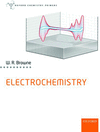issue contents
April 2019 issue

Cover illustration: Structure determination and DFT analysis of the bonding pattern in the antiseptic Miramistin were performed. Stabilization of the bent conformation of the organic cation occurs in both the crystalline and the isolated state due to noncovalent intramolecular interactions. See Dolgushin, Goloveshkin, Ananyev, Osintseva, Torubaev, Krylov & Golub [Acta Cryst. (2018), C74, 402-411].
research papers














 access
access







book reviews



 journal menu
journal menu





























